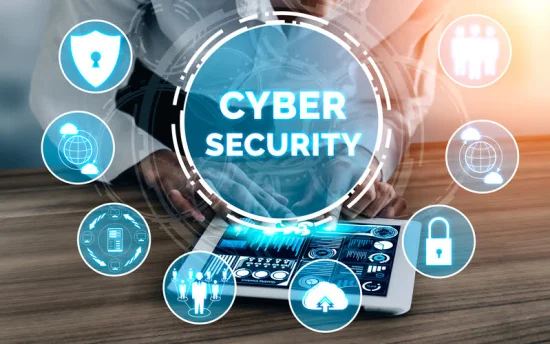30 Top Facts For Choosing A Cybersecurity Company in Dubai
30 Top Facts For Choosing A Cybersecurity Company in Dubai
Blog Article
Top 10 Tips To Evaluate The Compliance And Certifications Of A Cybersecurity Firm In Dubai.
1. Verify the Authenticity of CertificationsBegin by confirming that the certifications issued by the company are legitimate. Check with the certification bodies or the authorities who issued the certificates to confirm that they are current and valid. Key certifications to consider include ISO 27001, PCI DSS and copyright as well as others. Certificates that are valid prove compliance with accepted security standards.
2. Local Regulatory Compliance
Be familiar with local laws and regulations that govern cybersecurity within the UAE including the UAE Data Protection Law and the Dubai Cybersecurity Strategy. Make sure that your company is in compliance with these legal frameworks, as non-compliance can lead to damages to reputation and legal liability.
3. Review Industry Specific Standards
Depending upon your industry and the nature of your business, you could find that certain standards are more relevant. For instance, healthcare institutions might have to follow HIPAA and financial institutions might concentrate on PCI DSS. When you evaluate certifications that are specific to the industry, you can ensure that your business is prepared to manage specific risks for the sector.
4. Demand Documentation
Ask for comprehensive documentation demonstrating conformance with the relevant standards. This includes audit reports, security policies and risk management frameworks. This documentation will give you an understanding of how dedicated the business is to security and compliance.
5. Request Third-Party Audits
If the company undergoes regular audits by third parties it is important to determine. Independent audits enable an objective evaluation to be made of the company’s compliance status and security practices. Look for audit reports issued by reputable companies and verify the security practices of the business.
6. Evaluate Continuous Improvement Initiatives
Cybersecurity is a subject that changes constantly, which is why businesses must demonstrate their commitment to improve. Examine whether the business regularly updates its policies and procedures to keep up with the latest threats and changes to regulations. This may mean the updating of their security framework as well as continuing training.
7. Examine Employee Training Programs
Training employees is essential for a solid cybersecurity posture. Find out about the company's education programs that focus on security best practices and compliance. Regular training sessions are essential to keeping employees abreast of the most recent threats as well as compliance requirements.
8. Review Incident Response Plans
Learn about the company's emergency response procedures. A solid incident plan should detail how the company manages data breaches, notification processes and a strategy for remediation. Be sure that the protocols adhere to compliance requirements and industry best practices.
9. Ask for testimonials from clients as well as references and reviews.
References from clients can verify the compliance of the company and its certifications. Testimonials can provide an insight into the ability of the company to handle cybersecurity risks and also its reliability.
10. Research Industry Recognition
Examine the reputation of the business within the cybersecurity world. Look for awards, certificates, and memberships in professional organizations that emphasize their commitment to excellence in cybersecurity. A solid reputation usually correlates with the company's credibility and know-how. Have a look at the top Cybersecurity Company in Dubai for more info including consulting security, cyber security company near me, managed security services, cyber security business, cyber security in usa, it security usa, cyber technologist, cybersecurity and technology, best cybersecurity firms, manage security services and more.
Top 10 Tips On How To Assess The Incident Response Capability Of A Cyber Services Company
1. Learn about Incident Response FrameworkBegin by examining the framework for responding to incidents employed by the company. If the framework is clearly defined, as in the NIST Cybersecurity Framework, or SANS Incident Response Process for instance, it means that the organization adheres to industry-standard methods to handle incidents efficiently. Be sure that they have a well-structured method of managing incidents.
2. Evaluate Incident Response Team Expertise
Examine the experience and qualifications of the incident response team members. Look for certifications, such as Certified Incident Handlers or Certified Information Security Professionals. To efficiently manage and minimize incidents, you need an educated team.
3. Review past incident response Case Studies
You can ask for cases or studies of previous incidents handled by the business. Analyzing their responses to real-life scenarios can provide insight into the company's effectiveness as well as its speed and overall approach to management. Find out in detail how they identified, contained, or resolved incidents.
4. Check for 24/7 Incident Response Incident Response Availability
Determine if the company provides 24/7 incident response. Cybersecurity-related incidents can happen at any moment, and having a team always available ensures that any potential security threats are dealt with immediately, minimizing the time to repair and damage.
5. Request information about tools for detecting incidents
Review the tools and techniques that your company employs to detect and prevent incidents. Effective detection tools, like Security Information and Event Management (SIEM) systems and intrusion detection systems (IDS), are essential to identify potential security threats quickly and precisely.
6. Examine Communication Protocols
Find out what the business's communication strategy is with its stakeholders in the course of an event. Effective and clear communication is crucial for coordinating responses to inform stakeholders, as well as making sure everyone knows their roles in the event of an incident. Understand how they keep clients up-to-date throughout the response process.
7. Review Post Incident Review Procedures
Ask the company about its post-incident evaluation procedures. After an incident, thorough reviews will assist in identifying areas of improvement and the lessons gained. Companies that make adjustments in response to the reviews will be more efficient.
8. Evaluation of strategies for Remediation and Recovery
Learn the strategies your business employs to recuperate from a disaster and fix any issues. Effective recovery plans define the steps to be taken to ensure that information and systems are repaired while making sure to consider vulnerabilities in order to prevent future incidents. Find out what approach they use to rebuilding and hardening their systems after an incident.
Examine the Compliance with Regulations
Make sure that the business has emergency response capabilities that meet the requirements of regulatory agencies. In certain industries, there are specific regulations for reporting incidents and response. These rules are widely known by companies that can ensure the compliance.
10. Check references and testimonials
Get references from customers who have used the incident response service of your business. Customer testimonials can give valuable insights into their effectiveness and reliability as well as overall satisfaction with the response given during emergencies. Check out the top application penetration testing dubai for more recommendations including defining cyber security, network and network security, cyber security tech, cyber technologist, cyber security job, cyber security info, network it security, cyber security cybersecurity, cyber security services, computer security company and more.
Top 10 Tips On How To Assess The Security Capabilities Of A Cyber Services Company
1. Examine the Training Content and begin with a review of contents of the security awareness program. Make sure you cover the most important subjects, like phishing (social engineering), password security, compliance, and data protection. For employees to be capable of recognizing and responding to potential dangers, a thorough and comprehensive training program is essential.
2. Options for customization are offered
If the training is not customized request it to be customized. Making the training customized to meet the specific challenges and scenarios faced by your employees will enhance relevance and engagement. This results in higher retention.
3. Evaluation of methods for training delivery
Explore your options for delivering. Options include online simulations, webinars, online courses and workshops. It is possible to enhance the effectiveness of learning by combining various formats.
4. Interactive Elements
Check if the training includes interactivity, such as quizzes, simulations, and actual scenarios. Interactive training can increase the learning experience and increase engagement which makes it simpler for employees to use their skills in practical situations.
5. Evaluation of Update Frequency
Ask about the frequency with that the training is held and the frequency at which the content of the course is updated. In light of the constant evolution of cyber-attacks, it is essential that employees are kept informed by regularly scheduled training sessions.
6. Assess Measurement of Effectiveness
Learn how the company measures the effectiveness of its training program. Be aware of metrics for example, the pre- and post-training assessment as well as the feedback of participants or patterns in reporting incidents. Evaluation of the effectiveness of the program will help determine its value and areas for improvements.
7. Verify that the Certification is valid and complies.
Check if the training program offers certification after the completion. Credibility is enhanced by certifications, and can demonstrate that employees have acquired the necessary knowledge. Make sure that the education you offer is consistent with any regulations that your company may need.
8. Find testimonials and references
Gather feedback from organizations that have previously used the training services. Testimonials are an excellent way to gain insight into how well the training worked and how the participants reacted. Positive feedback is a sign of a good reputation for delivering effective awareness training.
9. Evaluation of Post-Training Training Support
Ask about the assistance available after the training has been completed. Resources such as newsletters, refresher courses or access to an online knowledge database could reinforce training and help keep security awareness at the forefront of employees' minds.
10. Examine Engagement and Building Cultural Connection
The final step is to evaluate the impact of your program for training in creating a culture of security within your organisation. Search for initiatives which promote awareness of security issues including workshops, newsletters or competitions. A solid security culture ensures that employees are involved in the security of the company. View the best iconnect for site examples including data secure, managed security, network and network security, network security management, network security management, cyber security in usa, best cybersecurity firms, cyber security in companies, business and cybersecurity, information and cyber security and more.